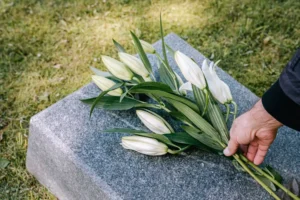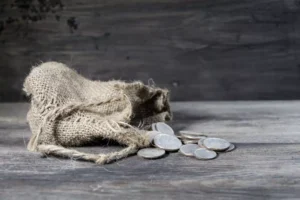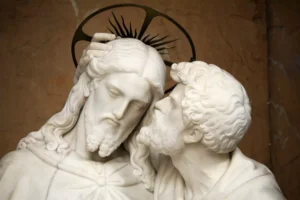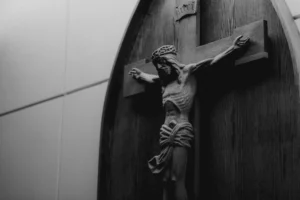I. November 17, 1992
Ten years ago, when I was 15, tattoos were just becoming trendy. In high schools all across the country, you could spy modest flowers peeking around the ankles of middle-class teenage girls. Shoulder blades were popular canvases for treble clefs, sunshines, balloons and lightning bolts. I remember an article in Sassy magazine — then the trendiest teen mag going — where a young man explained his Winnie-the-Pooh tattoo: Winnie with a bumble bee and a honey jar, symbols that apparently had deep meaning for the guy who’d gotten them permanently inked into his flesh.
I wanted to be part of the trend. So one afternoon, my friend HollyNot their real names. and I hopped into her hand-me-down Volvo and drove to Richmond, where, we knew from a little Yellow-Page skimming, several tattoo parlors could be found on Broad Street. (Our hometown, Charlottesville, now boasts at least one tattoo parlor, but it was parlor-free back in 1992.) We wound up at a shady looking place where we placed our bodies in the capable (we hoped) hands of Leon Lemenster.Not their real names. Leon was in his young 20s and, if memory serves, had 32 tattoos, all of which he’d made himself, all of skulls.
Holly was an old hand at this. About a year before, she’d gotten a small, black lightning bolt tattooed on her hip. She didn’t plan to get any new tattoos on this trip, but she did have the lightning bolt touched up.
I, on the other hand, was armed with ideas and pictures. I wanted five tattoos. Thankfully, Holly and Dave talked me out of the most ridiculous of the five — an undulating belly- dancer, which I wanted planted on my left shoulder. But I walked out of the tattoo shop, 10 hours later, with the other four: a band of autumnal leaves encircling my left bicep, a small teal moon on my right ankle, a wreath of laurel leaves near my navel and a purple pentacle flower beneath my collar bone.
Let me explain. The autumnal flowers didn’t have any real meaning. The fall has always been my favorite season, and the crunchy orange and red leaves have always been my favorite thing about the season. But the other three tattoos were all expressions of my adolescent feminism. I had found pictures of them — the wreath, the moon and the pentacle flower — in The Woman’s Dictionary of Symbols and Sacred Objects by Barbara G. Walker. I believed each of these symbols was terribly profound. The wreath had a double meaning: ‘wreath of laurel leaves’ is what ‘Lauren’ means, but a laurel tree was also what Diana, the ancient goddess of light and the moon, turned herself into to escape Apollo’s unwelcome advances. This was the early ’90s, remember, when feminist protests against date rape were in full swing. This wreath, I thought, would be a statement of solidarity with all my sisters who had been victimized.
The moon was filled with feminist import, too. The moon, which waxes and wanes on a monthly cycle, has long been understood as a symbol of female power. This tattoo was just one of many moons I sported in high school: I dangled moons from my ears, draped them around my neck, even sewed moon patches onto my jeans. A moon tattoo seemed logical, a permanent proclamation of my lifelong commitment to … menstruation, I guess.
Which brings us to the fourth and final tattoo: the pentacle flower. Picture a five-pointed star imbedded in a five-petaled flower. It looks a little like a pentagram, only more … floral. Unlike pentagrams, the pentacle flower isn’t exactly about Satan-worship; it has more to do with womyn-worship. The pentacle flower is a Wiccan symbol, and the five points and five petals symbolize the five stages of archetypically feminine life: birth, menarche, childbirth, menopause and death. I wasn’t a witch, but I didn’t see anything wrong with borrowing Wiccan symbols. After all, this pentacle flower celebrated earthy, woman power. It would insistently remind anyone who looked at me, I reasoned, that women’s bodies were holy and spiritual, that women were even a little god like in our ability to create and bring forth life. It would declare, in the face of a culture supposedly hostile to women and women’s bodies, that women’s bodies were sacred and lovely, things to be affirmed and reveled in not dieted away or saved chastely for a patriarchal wedding night. What could be wrong with that?
II. March 22, 1998
A few days after I was baptized, Randolph, a minister who attended the ceremony, called me. “Lauren,” he said, “I’ve been thinking about your baptism. I was very moved when you stood there and renounced Satan. As you did that, you touched your heart. I thought that was very moving.”
I had to admit to the minister that I had not, in fact, been touching my heart, but touching my tattoo. “I guess you’ve never seen it,” I said. “It’s a purple Wiccan symbol, on my chest. It’s not exactly a symbol of Satan, but it does symbolize a lot of things that I think make Satan happy.”
“Oh?” asked Randolph. “Like what?”
“Well, when I got my tattoos, I was very much into a type of feminism that simply reveled in woman-power, without giving any thought to how God wanted human beings to order their sexual lives. And my whole approach to spirituality….” I paused. “I think my whole approach to spirituality was premised on a belief that our bodies are inherently good and that spirituality is just icing on the cake, something you add to get a little buzz. I wouldn’t say I believe that anymore. I’d say that our bodies are good, because God created them, but we have debased them through sin. Maybe it’s a subtle difference, but I think it’s an important one. I think Satan wants us to think that we can be good without God. And that, somehow, is what this tattoo is about for me. That’s why I put my hand over it when I renounced Satan.”
A few days later I got a note from Randolph. “I continue to be struck by your tattoo,” he wrote. “I am struck by its placement right above your heart, and I am struck by your renouncing it, even as it continues to live on your flesh. I am going to pray for your spiritual protection. I will pray that Satan doesn’t worm his way through that tattoo to your heart. I will pray that God will somehow use your tattoo.”
III. October 27, 2001
Saturday night, I was walking across campus at about 9:30, and I noticed that everyone was in costume: curly clown wigs, pointy black hats and broomsticks, ballerina’s tutus, black velvet capes, even a Bill Clinton mask. It took me a minute to figure out why people were dressed up; then I realized that because Halloween fell in the middle of the week, people were celebrating early.
Not me. I don’t understand the spiritual world very well, but I figure better safe than sorry: I suppose every Christian community needs to decide for itself how to approach Halloween, but life in New York is spiritually perilous enough as it is. No need to go inviting spiritual warfare by flirting with ghouls and demons on Oct. 31 (or even Oct. 27). I planned to spend the evening studying. (I admit it; the life of a grad student, which sometimes requires devoting Saturday night to studies, can be depressing).
Even in the library, people were dressed up. A woman with sparkly angel wings attached to her back sidled up to me. I recognized her as Maria; she had taken my American history class last year and was now in her first year at Columbia Law School. We chatted about classes and family and the weather, and eventually Maria said, “I’ve been wanting to ask you….” She trailed off. “If this is too personal, just tell me to mind my own business, but I remember your Wiccan tattoo. Why aren’t you out celebrating?”
I sensed that Maria wanted to know something more than why I was in the library the Saturday before Halloween. I explained that I had gotten the tattoo a long time ago. “It was a youthful foible,” I said. “I’m not really into the whole Wiccan spirituality thing.”
Maria tugged at her shirt. There, on the small of her back, was a bright blue pentacle flower, about the size of a personal pan pizza. I was surprised. I had never seen another pentacle flower tattoo before. “I got this done two years ago,” Maria said. “I was in a sort of women’s spirituality group, and we all went out one night and got different tattoos: ankhs, women symbols, moons.”
Moons, I thought. Of course.
“Do you know anything about getting them removed?” she asked. “To be perfectly honest, I regret getting this tattoo.”
The fact is, Maria may very well wish she had a pristine back. But when people start talking about getting tattoos removed — just like when they get tattoos in the first place — there is usually something more than mere aesthetics going on.
“I have toyed with getting some of my tattoos removed,” I said, “because I no longer believe the things I believed when I got them.”
“What do you mean?” she asked. “Like, are you no longer a feminist?”
“Well, my thinking about feminism certainly has changed since I was in high school,” I said. “But more, my thinking about spiritual matters had changed.” At this point, I felt a little uncomfortable, as I always do when matters of faith come up with my students. I am never sure how to handle these conversations. After all, Columbia isn’t paying me to evangelize. It’s paying me to teach American history. On the other hand, Columbia hasn’t justified me or suffered for my sins, and however interested Jesus is in my helping students understand the minutiae of Civil War battles, He is even more interested in my helping them know about eternal things.
Still, I was half hoping Maria would change the subject. Instead she said “Well, that’s precisely the point for me too. I quit going to that group because things got a little weird. People were too interested in tapping into ancient goddesses that I just don’t believe in. “But here I am stuck with this tattoo.”
I remembered, then, the note I had received from Randolph. I will pray that God will somehow use your tattoo. I remembered that note, and I understood Maria’s question about laser surgery for what it was: not a question about tattoos, but an invitation to tell her about the things I had come to believe in my post-tattoo years. I understood that she was asking me to be a witness in the Greek sense of the word: one who, when asked (like a witness in a court trial), can testify to the things he knows.
So that is just what I did. I told her that if I were getting a tattoo today, I would get a cross, and I told her why.
IV. October 31, 2001
Maria had planned to go to a mid-week Halloween party, and I had planned, predictably, to spend the evening, yes, at the library. But instead we’re going to meet up to carve a pumpkin and toast pumpkin seeds. I’m not sure, of course, how our Halloween conversation will unfold, but I know that God, in His goodness, has found a way to turn a purple Wiccan tattoo — a reminder of my unchristian past — into a pointer to His eternal glory.
Copyright 2001 Lauren F. Winner. All rights reserved.











